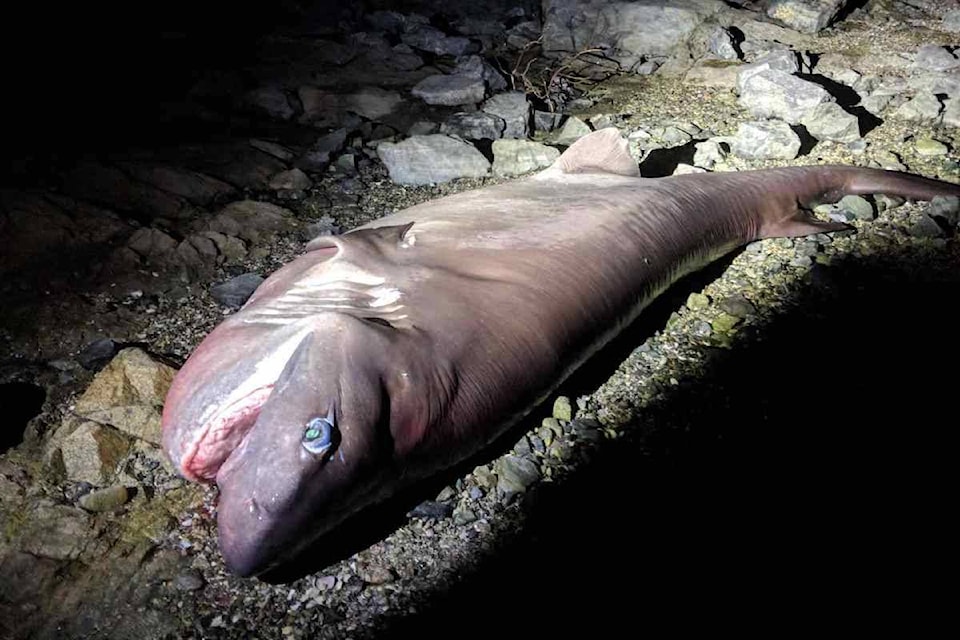The 10-foot-long shark that washed ashore at Coles Bay has been identified by experts as a Hexanchus griseus or Bluntnose sixgill shark.
Lots of Peninsula News Review readers emailed in to confirm the experts’ identification.
Residents saw what they thought was a shark swimming in the bay on Feb. 3 and two days later saw it had washed ashore dead.
While it is too early to say what caused its death, Brian Timmer, a student at UVic’s prestigious Juanes Laboratory says that due to the shark’s distended belly, it is likely that it was a mother that ran into complications while giving birth. Although a necropsy (an autopsy for animals) is needed, this is a likely scenario as mothers are known to come into shallower waters to give birth and have large litters of 20 to 100 pups.
RELATED: 10-foot-long shark washes ashore in North Saanich
“Sixgills give live births and are known to come into shallower waters to give birth, as well as for hunting on a nightly basis because they are sensitive to light.” said Timmer.
Other possibilities are that it was poisoned, endured a stressful event or died of old age, but nothing will be known for sure until a necropsy is carried out.
READ ALSO: Ratfixh generats social media buzz on Vancouver Island
The Juanes Laboratory is contacting Fisheries and Oceans Canada, the federal agency with oversight in this area, to see if they can perform the necropsy and then report back their findings.
A similar event occurred in Port Alberni on Feb.13 2011, and the cause was attributed to a shark encountering complications while giving birth.
Local whale-watching skipper, Evan Sztricsko was on the water south of Ogden Point, last summer, when he recovered a much smaller sixgill shark.
‘I was informed by the DFO [Fisheries and Oceans Canada] that often they die choking on traps that are baited for crabs or other animals.’ said Sztricsko.
READ ALSO: Rare ‘king-of-the-salmon’ washes up on Oak Bay beach
Timmer says that since there will be a necropsy, the chances of a whale-style beach explosion, where internal gasses build up until they blow, is slim. Likely the stomach and any other organs that might have had gas build-up from decomposition will be taken for analysis, and used to find out about the shark’s diet and lifestyle.
